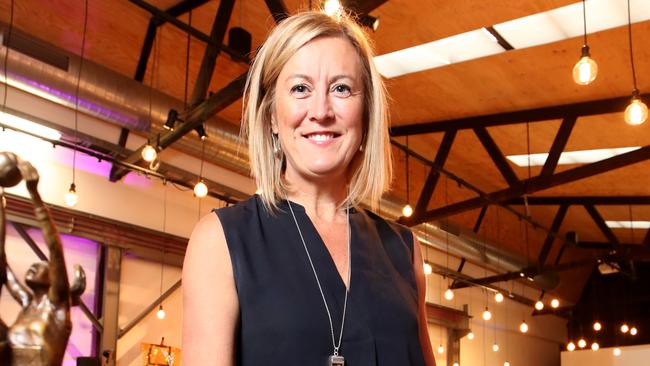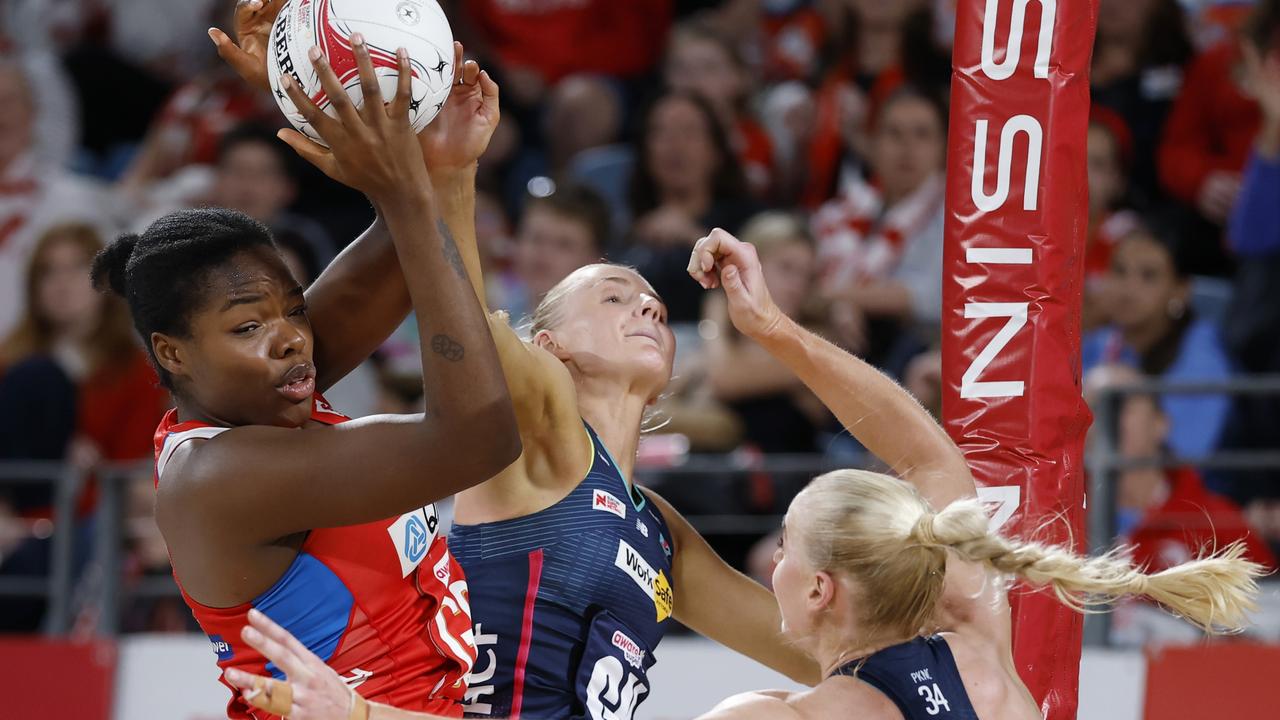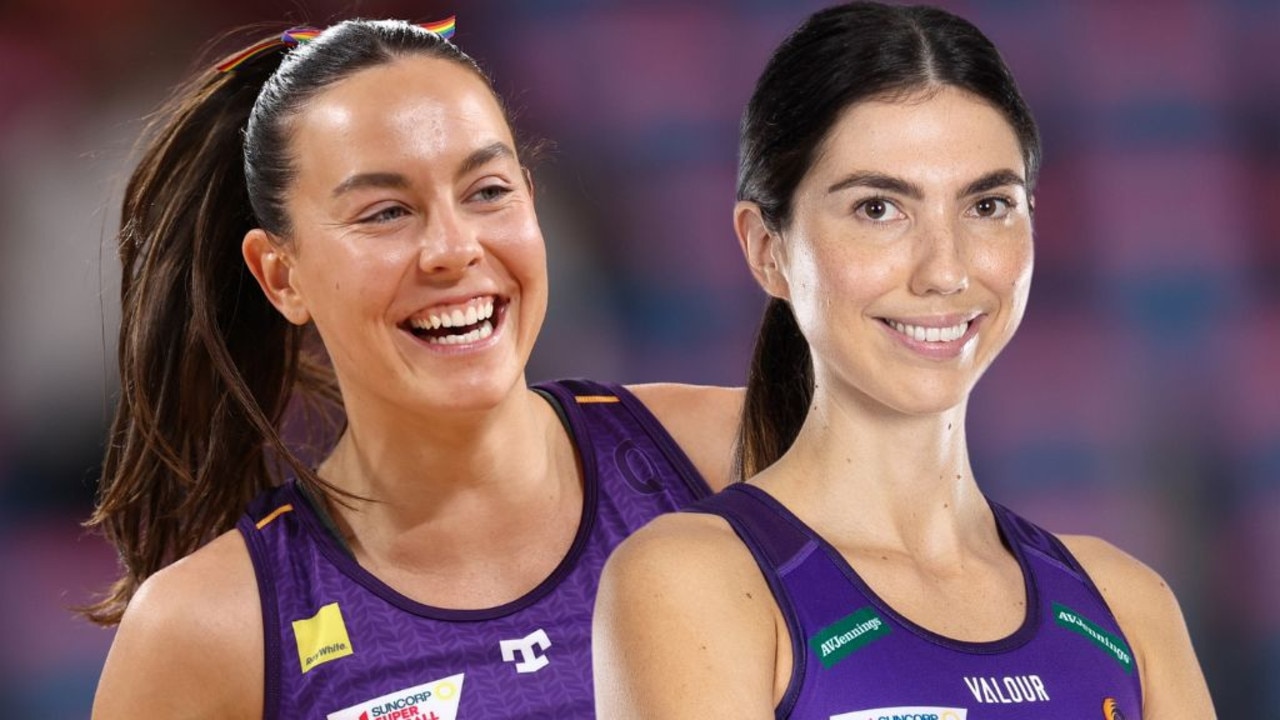Super Netball at a crossroads ahead of crucial negotiations
There are growing concerns about instability at netball’s highest levels ahead of a series of negotiations that will define the sport’s future.

There are growing concerns about instability at netball’s highest levels ahead of a crucial series of negotiations that will define the sport’s future.
Netball Australia chief executive Marne Fechner and Super Netball chief executive Chris Symington both resigned in the space of seven days earlier in November.
The Weekend Australian understands that Symington’s role will not be filled, with Netball Australia bringing leadership of the league back in-house. There are also hard questions being asked about the future of Super Netball’s independent commission, chaired by Marina Go. That commission is barely a year old.
Administrators, players and coaches are all extremely concerned about the sense that the sport is going backwards at the worst possible time.
Multiple senior figures described the current situation as a fire sale. There are more significant staffing cuts expected at Netball Australia in December.
When asked, Netball Australia insisted the Super Netball commission had a rock-solid future, and that other staffing changes were simply a reflection of the same constraints hitting all sports this year.
Netball Australia has no major commercial, broadcast, or player deals struck beyond 2021, and had hoped to pin down much of that framework over the coming summer. But delays forced by COVID make it unlikely that any new agreements will be struck before the start of the next Super Netball season.
The process of negotiating those new deals will be led by interim Netball Australia chief executive Ron Steiner, until a new boss is hired later in 2021.
The most crucial piece of the puzzle is a new broadcast agreement, with clubs hoping for a substantial improvement on the current deal that has been in place since 2017.
That deal, struck with the Nine Network and Telstra, provides netball with no guaranteed cash flow. Instead, profits from sponsorship and advertising revenue are split between the broadcasters and the sport.
This structure was viewed as revolutionary when announced. It has delivered substantial commercial growth and a long-coveted place on a free-to-air network’s main channel, but that has come at a heavy cost.
While Netball Australia has handed every club an annual grant to cover a substantial portion of player wages, teams are still required to cover much of the remaining overheads, including stadium hire fees.
No Super Netball team is turning a profit. Some have lost close to $1m a season, with most bleeding at least half that rate.
While some supporters of the Super Netball structure insist that it was never going to be profitable after a handful of years, there is now a broad acknowledgment that the league’s commercial trajectory has fallen short of expectations.
“This is new. Suncorp Super Netball and moving away from the ANZ Championship, there was lots that we learned from that experience in terms of expectations of growth, and where we pitch this,” Fechner said.
Netball Victoria chief executive Rosie King described the targets set for broadcast audiences as aspirational.
“This joint venture (with Nine) was considered to be very innovative at the time, with the profit share piece. We said at the time that, look, it’s really only going to be innovative if it works. And there’s been no money back to the teams.”
Six of the league’s eight teams are run by state netball organisations, underpinned by a large pool of association fees and money collected from the sport’s grassroots.
That has created a dynamic whereby the losses of netball’s elite competition, developed as a commercial product, are being propped up by money drawn from local clubs.
“As a member organisation, when we look at our grassroots community, we’ve effectively taken out $1m a year from investing back into the community. And you can bet your bottom dollar that there would be some in the community who would say, ‘I would much rather that money come back into our development’,” said King.
Super Netball is now stuck in an awkward phase. It has grown far beyond the footprint that the previous ANZ Championship held in Australia’s sporting landscape, but has not reached a scale required to attract the kind of sponsorship and commercial revenue that could balance the books.
The multitude of decisions facing the league now largely boil down to one big call: having fallen short of ambitious aspirations, is it time to recalibrate and pursue a more conservative approach? Or is it time to back in the model with the confidence that a better-resourced Super Netball could break through to a new level?
“Super Netball hit with a blast, it’s plateaued, and now we need to go again,” outgoing Netball NSW boss Carolyn Campbell said.
Campbell said she was hopeful a restructured deal could deliver positive growth, but it was vital to turn Super Netball into a stronger commercial asset.
Netball Australia is also clearly committed to a continued push for growth.
“We’re not going to want to go backwards,” Symington says. “So there’s obviously a commitment from Netball Australia and Suncorp Super Netball to make sure that this remains the best competition in the world. We need to be smart about how we do that.”
There is a deeper fight in the background of these discussions, around the scope for ambition in a cash-strapped game. Leaders at the national and state level have pushed hard to keep netball at the forefront of an increasingly competitive women’s sporting landscape. Their stated aim is for Super Netball to be the world’s best women’s competition, and for netballers to be the best-paid female athletes in Australia.
Rosie King emphasised the importance of those high-profile players for the sport’s future.
“The next (collective player’s agreement) has been held off until we get the broadcast deal done. So we need the broadcast deal to be better, so that we can pay the players more.
‘”therwise what will happen is that the profile of the netball athlete being well remunerated will be a thing of the past, we will be an also-ran.”
But others inside the sport say this is exactly the kind of wishful thinking that has left the league bleeding money, and netball needs to come to terms with the fact that it can’t compete financially with larger Australian sports.
One possible circuit breaker in this debate is privatisation, a major topic of conversation this year. Private investment in teams, or the league itself, could deliver a much-needed shot in the arm and remove that financial burden currently placed on the sport’s grassroots.
Symington and Fechner said it was too early to know if privatisation was a good fit for netball, but would not rule it out.
Any pitch to private equity could be complicated by Collingwood’s calamitous entry into netball. The financial losses suffered by the Magpies are among the highest in the league, and the team has constantly struggled for success on the court despite a cavalcade of high-profile signings.
It could be difficult to drum up more investment in Super Netball as persistent doubts hang over the future of the competition’s largest private partner.
As one senior administrator explained, no one has to walk into an Australian boardroom and convince them of the value of cricket, or rugby league. But netball leaders feel like they are constantly having to sell the game to their own partners.
Teams had no say in the previous round of negotiations, and are frustrated that they have no insight into the plan for the upcoming deal.
Netball Australia is currently completing a major state-of-the-game review, led by former Diamond Liz Ellis.



